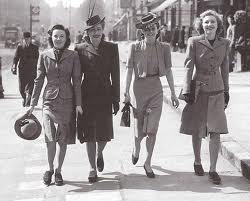 |
| Front entrance - Codrington College |
Codrington College & Consett Plantation
 |
| A 'Blue Plaque' |
 |
| Driveway - Codrington College |
 |
| Front lawn and lily pond |
 |
| Back of great entrance to driveway |
 |
| Consett Mansion (mainly rebuilt) |
 |
| View from beyond College to Consett Bay |
The vist to the college took my breath away, it is stately, quiet and in a beautiful setting. We wandered round the gorgeous gardens and tip-toed through and around the building making sure not to disturb the classes. It is unfortunate they do not organsie a guide or two, as a cultural heritage site it could make some money for their restoration fund.
The story begins ...
Christopher Codrington, the founder of the West Indian line of his family arrived in Barbados (island first settled 1627) in the late 1630’s.
His family were from Gloucestershire and well established landowners
with links going back to Henry V at Agincourt.
At the time probably the only man on the island with aristocratic blood
and sympathetic to the Charles I. He
married the sister of James and William Drax the first family to grow sugar successfully
and grow prosperous, thus an alliance was created between the two ‘Sugar Baron’
families.
In 1640 a son was born, also named Christopher, who was to
become one of the most important Englishmen in the Americas. Grew up on the island to become a wealthy
man, became deputy governor for a time enforcing the Navigation Acts and the
rule of law. His downfall came in his 31st
year when his reputation took a tumble concerning the ownership of Consett
Plantation. The questions were never
properly answered. Was it won at cards? Did the elderly owners sign over the
property and their lives to their next door neighbours the Codringtons? Was
there a dodgy land deal with a man called Willoughby, son of the governor? The elderly couple died within weeks of each
other Codrington took possession of Consett. Willoughby was invited to supper
shortly afterwards and died the next morning; had he contested ownership? Many
believed he had been deliberately poisoned! Even though nothing was proved
Codrington was never trusted in office again, his reputation was in ruins. He would eventually decide to leave Barbados
but not before he turned to illegal trading. His plantation was set above
Consett Bay which was ideal to land slaves direct from Africa in defiance of
the Royal African Company’s monopoly, he did not operate through Bridgetown or
deal with the factors of the RAC, in the eyes of the other planters he became a
smuggler. The story of Christopher
Codrington II is long and fascinating and he left Barbados to pursue his
destiny as the Governor of Leeward Islands.
Then there was Christopher Codrington III, his son, who we
will mention in more detail in connection with Codrington College.
The Consett plantation was one of the oldest on the island
established in 1635 by William Consett. Also the most valuable. There was a
fresh water spring and the land also contained rare clay deposits, clay was
used for pots when ‘claying’ the sugar. It also had a fine sheltered harbour
which we mentioned previously. Products from the plantation could be carried
away by boat instead of going by road, 14-mile trek across the island to
Bridgetown ideal when Codrington senior wished to avoid taxes and the law.
It was the young Christopher who left the plantation to the
church and insisted in his will that it was to be used to spread the word of
God and to educate the slaves. It was a hugely unpopular with the supposed
heirs and the local plantocracy and they did everything in their power to
contest it. The church won and a College was built to ‘study and practice
physic and chirurgery, as well as divinity’.
I really cannot do justice to the story of this beautiful
place or to the fascinating and complex story of the Codringtons, father and
son, for that you will have to read the ‘The Sugar Barons’ by Matthew Parker,
Wiki definitely does not do them justice! Also you might like to peruse the
pamphlet below, which some detail as to how the College was built, the disasters
that befell it and how it stands today as an esteemed establishment of theology
throughout the West Indies.
February 2013


No comments:
Post a Comment